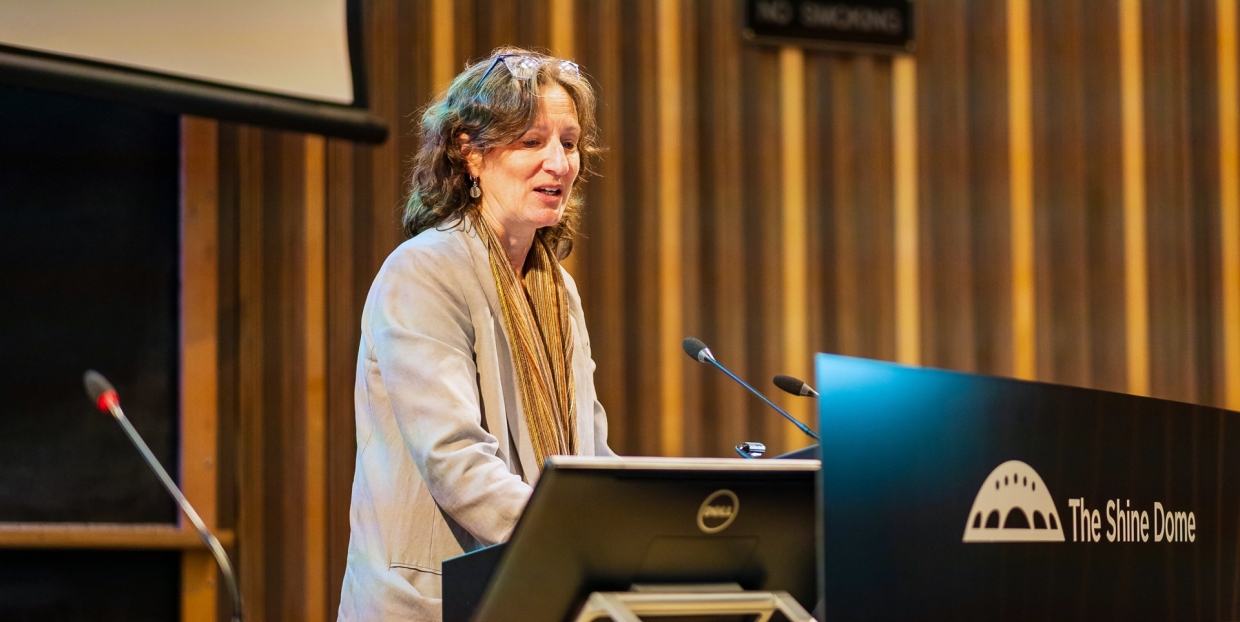Lessons from Canada on water use planning
Watertrust recently brought together a diverse group of stakeholders interested in the management of water in the Snowy Mountains to hear inspiring stories of how novel policy-making processes in British Columbia, Canada have transformed water management and massively improved outcomes for stakeholders.
With strong parallels between the current opportunities to improve water management in the Snowy Mountains and the experiences of the British Columbia Hydro and Power Authority (BC Hydro) in creating new water use plans in the early 2000's, Watertrust Australia tapped into the deep experience of two of the architects of BC Hydro's planning process to share their valuable lessons.
Daryl Fields (a former operational manager and now Board member at BC Hydro) and Lee Failing (a specialist in public decision making) were open and honest about their successes and challenges, and what their lessons might mean for opportunities to improve water management in the Snowy Mountains and Australia more broadly.
Importantly, their practical, real-life examples resonated with attendees. What was abundantly clear was how inclusive and deliberative policy-making processes lead to better management of hydro-affected rivers, which ultimately results in positive impacts for all stakeholders. Not only that, genuine and meaningful stakeholder participation in decision-making processes improves relationships with stakeholders. Daryl emphasised how the process enhanced BC Hydro's social license to operate and moved the stakeholder landscape from hostile and litigious to calm and productive.

Attendees were encouraged to learn of how transformative inclusive processes can be. Where normally 'sides' are pitched against each other and set on achieving pre-determined outcomes to the detriment of others, inclusive deliberative processes often overcome deadlocks to create new and innovative policy options that achieve wins for everyone. In the case of BC Hydro's water use plans, new flow regimes were created that allowed for additional hydropower generation for BC Hydro while also improving conditions for cultural and spiritual values for First Nations and local communities, and improving environmental conditions, particularly for critical salmon populations.
Watertrust Australia’s Peter Horne made the event happen and said he was overjoyed with the outcome. ‘Everybody was genuinely interested and enthusiastic,’ he said. ‘If I were to summarise the outcome of the visit, everybody was deeply intrigued by the process that was developed in British Columbia, and this was more than just, “Oh, that’s interesting”. It was: how do we do that here? Stakeholders were saying immediately that this is something we need to do.’
Following their visit, Daryl and Lee reflected on what they had observed: "across the diverse range of stakeholders we met, there is high willingness and interest in a truly collaborative approach to water management, such as that offered by structured decision making. This is not something we always see."
Daryl has first-hand knowledge of how difficult policy collaboration can be. In the 1990s, hydro electricity generation in British Columbia dominated the water policy landscape. However, BC Hydro faced growing tensions with several interest groups over their water management decisions and the resulting negative impacts on stakeholders. They addressed these issues by creating new water use plans that better accounted for the wide range of stakeholder values and interests, such as cultural, spiritual and environmental values. Front and centre of the whole decision-making process was meaningful inclusion of stakeholders to ensure the plans truly reflected stakeholder values. So an approach called structured decision making (SDM) was employed, developed in part by Lee Failing and colleagues. This approach led to 22 water use plans plans being developed through consensus of the stakeholders, all of which are still in place.
If you'd like to dive into the details of SDM concepts, how they were applied to develop better water use plans, and what Daryl and Lee have learnt over this 20-year journey the video recordings and slides from their presentations are available below.
Watertrust is proud to have been able to put on this important event and bring everyone together to hear Daryl and Lee's important messages of how policy can be more inclusive, and how meaningful deliberation can expand the range of policy options and help find solutions that work better for everyone. While Watertrust does not create policy we exist to provide policymakers and stakeholders with the best possible advice, tools and evidence so policy processes work better for everyone.
We are continuing to consult with stakeholders to gauge the breadth of interest in a 'decision sketch' process tailored for the Snowy context. Decision sketching involves walking through the first few steps of a decision process quickly, to clarify key aspects of the decision, determine the best way to frame it, and inform the design of the decision process.
"Across the diverse range of stakeholders we met, there is high willingness and interest in a truly collaborative approach to water management, such as that offered by structured decision making. This is not something we always see."